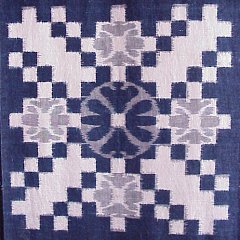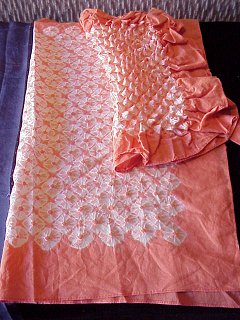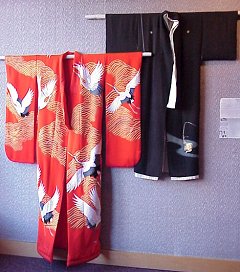| Most of these KASURI (ikat) fabrics
are cotton that was indigo-dyed many years ago.. Kasuri textiles
are produced by the weaving of pre-dyed yarns in which portions of the
yarn are tightly bound or compressed prior to being dyed. The
dye does not penetrate these protected areas when the yarn is dipped
into the dye bath. This produces a yarn that is partly white and
partly colored. The yarn is then used as warp or weft (or both) so
that a pattern, with slightly blurred edges, emerges as the cloth is woven.
Great skill is required of the dyer to bind the yarn in exactly the right place and of the weaver to ensure the pattern will appear as planned. One of the most striking characteristics of Japanese kasuri is the use of free form and realistic designs ("picture kasuri"), often used with geometric motifs. Many of these kasuri textiles were futon
covers.
|


